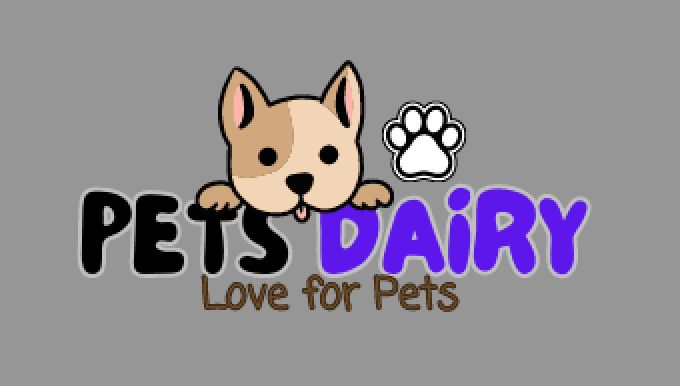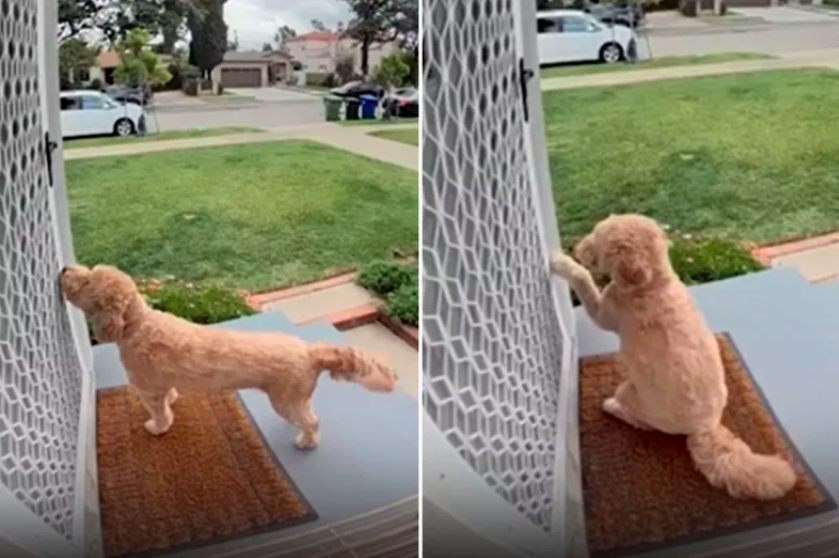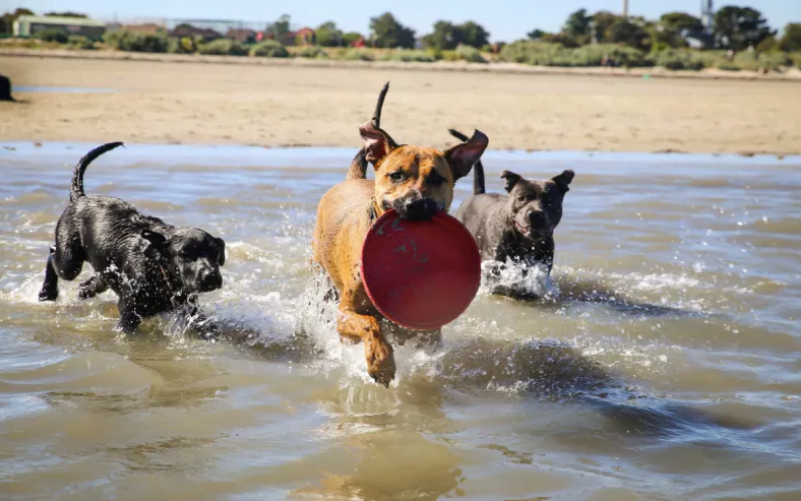Dogs
The Majestic Great Pyrenees: A Comprehensive Guide to This Gentle Giant
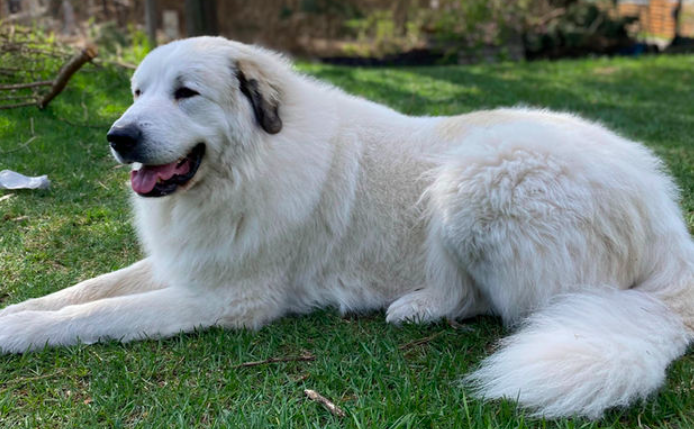
The Majestic Great Pyrenees: A Comprehensive Guide to This Gentle Giant
Embarking on a journey with a Great Pyrenees is like stepping into a world of gentle giants. These magnificent dogs, known for their impressive size and lush white coats, are more than just a pretty face. They are a blend of grace, strength, and loyalty, making them a beloved breed for families and individuals alike.
In this comprehensive guide, we delve deep into the world of the Great Pyrenees, exploring everything from their rich history to the nuances of their care and temperament. As a breed known for its protective nature and calm demeanor, the Great Pyrenees has a fascinating story and a set of characteristics that make it unique.
Whether you’re a seasoned owner or considering bringing one of these majestic creatures into your home, this article promises to equip you with all the knowledge you need. Join us as we explore the origins, personality traits, care tips, and much more about these gentle giants.
Prepare to fall in love with the Great Pyrenees, a breed that effortlessly captures hearts with its noble presence and endearing personality.
History and Origin of the Great Pyrenees
The Great Pyrenees, with its majestic appearance and noble demeanor, has a rich history that is as fascinating as the breed itself. Understanding where this breed comes from and how it has evolved over the centuries provides valuable insight into its character and temperament.
The Ancient Roots and Historical Roles of the Breed
- Origin in the Mountains:
- The breed originated in the Pyrenees Mountains, which form a natural border between France and Spain.
- Its ancestry is believed to date back several thousand years, possibly as far back as 3000 B.C.
- Guardian of Flocks:
- The primary role of the Great Pyrenees historically was to protect sheep from predators like wolves and bears.
- Their size, strength, and courage made them ideal for guarding livestock in harsh mountainous terrain.
- A Breed for Royalty:
- By the 17th century, the Great Pyrenees had gained popularity beyond farming communities.
- It became a favored breed in the French court, known for its elegance and guarding capabilities.
Evolution into a Family Companion
- Transition from Working Dog to Pet:
- While the breed’s protective instincts remained, its gentle nature started to be appreciated in domestic settings.
- Over time, the Great Pyrenees transitioned from a working dog to a family companion, valued for both its demeanor and its appearance.
- Worldwide Recognition:
- The breed was introduced to North America in the 1800s and quickly gained popularity.
- Recognized by various kennel clubs around the world, it has become a well-loved breed for families and dog enthusiasts.
- Modern-Day Roles:
- Today, the Great Pyrenees is admired not just as a family pet but also for various roles including therapy and rescue work.
- Its calm and patient nature makes it an excellent choice for therapeutic settings, while its strength and intelligence lend well to search and rescue operations.
Understanding the history and origin of the Great Pyrenees helps to appreciate the breed’s unique characteristics.
From its early days as a formidable guardian of flocks in the Pyrenees Mountains to its current status as a gentle and loyal family companion, the Great Pyrenees has a storied past that contributes to its allure and charm.
Physical Characteristics of the Great Pyrenees
The Great Pyrenees is a breed that captivates with its majestic and imposing physical presence. Known for its beauty and strength, understanding its physical characteristics is essential for potential owners and breed enthusiasts.
Let’s delve into the details of their size, coat, and unique physical traits.
Size, Coat, and Color
- Impressive Stature:
- Males typically stand between 27 to 32 inches at the shoulder, while females are slightly smaller.
- They weigh anywhere from 85 to 160 pounds, with males generally being heavier.
- Luxurious Double Coat:
- The breed boasts a thick, weather-resistant double coat.
- The outer coat is long and straight or slightly wavy, while the undercoat is fine and woolly, providing insulation.
- Predominantly White Coloration:
- The Great Pyrenees is primarily known for its elegant white coat.
- Some may have markings in shades of gray, tan, reddish-brown, or badger scattered on the body.
Distinct Physical Traits
- Noble and Refined Head:
- The breed features a strong, wedge-shaped head with a slightly rounded crown.
- The expression is often regal and thoughtful, with dark brown eyes that exude a gentle yet alert demeanor.
- Powerful Body Structure:
- They possess a well-balanced and sturdy body, with a broad chest and strong back.
- The overall build reflects their historical role as a working dog capable of enduring tough conditions.
- Characteristic Plumed Tail:
- One of the most distinctive features is their long, plumed tail.
- When relaxed, it hangs down, and in action, it curls over the back, displaying their lively spirit.
Special Features
- Weather-Resistant Features:
- Their dense coat is designed to protect them from harsh weather, be it snow, rain, or wind.
- The double coat also sheds water and dirt, keeping them relatively clean compared to other breeds.
- Adaptability to Various Climates:
- Despite being bred for cold mountainous environments, the Great Pyrenees can adapt to warmer climates.
- Adequate shade, hydration, and climate control are necessary in hotter regions.
- Feet and Movement:
- They have strong, compact feet, almost cat-like, providing agility and endurance.
- The breed moves with a graceful and effortless gait, reflecting both power and elegance.
The physical characteristics of the Great Pyrenees not only contribute to its striking appearance but also serve functional purposes, reflecting its historical background as a guardian breed.
The combination of their impressive size, luxurious coat, and distinct features make them a truly remarkable and attractive breed.
Personality and Temperament of the Great Pyrenees
The Great Pyrenees, known for its calm demeanor and watchful nature, presents a fascinating blend of gentleness and strength. Understanding their personality and temperament is crucial for prospective and current owners alike.
Protective Instincts and Loyalty
- Natural Guardians:
- The Great Pyrenees has an innate guarding instinct, developed over centuries of protecting flocks in harsh mountain conditions.
- They are vigilant and protective, often assuming the role of a guardian in their family.
- Gentle with Family:
- Despite their size and protective nature, they are known for their gentle and affectionate behavior towards family members.
- Their calm and patient demeanor makes them excellent companions, especially in homes with children.
- Reserved with Strangers:
- They tend to be wary of strangers, displaying a reserved and sometimes aloof attitude.
- Early socialization is key to helping them distinguish between normal and threatening situations.
Interaction with Children and Pets
- Great with Kids:
- Their gentle nature often translates into a nurturing and protective attitude towards children.
- However, due to their size, supervision is recommended, especially with younger children.
- Coexisting with Other Pets:
- The Great Pyrenees can coexist peacefully with other household pets, especially when raised together.
- Their herding instinct might kick in, so they may try to “herd” smaller pets or children.
Health and Lifespan of the Great Pyrenees
A crucial aspect of caring for a Great Pyrenees is understanding their health needs and potential issues. This section covers common health concerns and tips for ensuring a long, healthy life for these magnificent dogs.
Common Health Issues in the Breed
- Hip Dysplasia:
- A genetic condition where the hip joint doesn’t fit properly, potentially leading to arthritis.
- Regular vet check-ups and maintaining a healthy weight can help manage this condition.
- Bloat or Gastric Torsion:
- A life-threatening condition where the stomach fills with gas and sometimes twists.
- Smaller, more frequent meals and avoiding vigorous exercise around meal times can reduce the risk.
- Bone Cancer:
- Larger breeds like the Great Pyrenees are at a higher risk for bone cancer.
- Early detection through regular veterinary visits is vital for effective treatment.
Tips for Longevity and Wellness
- Balanced Diet:
- Feeding them a balanced diet suitable for large breeds helps maintain optimal weight and health.
- Consultation with a vet for dietary recommendations is advisable, especially as they age.
- Regular Exercise:
- Adequate exercise is crucial for their physical and mental well-being.
- Activities should be appropriate for their size and energy level to avoid joint strain.
- Mental Stimulation:
- They are intelligent dogs and require mental stimulation to prevent boredom.
- Interactive toys, training sessions, and gentle play can keep their minds active.
Training and Socialization of the Great Pyrenees
Training and socialization are critical aspects of raising a well-adjusted Great Pyrenees. Given their size, strength, and guardian instincts, it’s essential to focus on these areas from an early age to ensure they grow into well-behaved and sociable adult dogs.
Importance of Early Training
- Establishing Leadership:
- Start training as early as possible to establish yourself as the pack leader.
- Consistent, gentle, and firm guidance helps them understand expected behaviors.
- Training Challenges:
- The breed is known for its independent nature, which can be challenging during training.
- Patience and persistence are key; they may not respond to commands as quickly as more eager-to-please breeds.
- Basic Obedience Training:
- Focus on basic commands like sit, stay, come, and heel.
- Positive reinforcement techniques, such as treats and praise, are effective.
- Leash Training:
- Given their size, teaching them to walk nicely on a leash is crucial for manageable walks.
- Start leash training in a quiet environment with minimal distractions.
Techniques for Effective Socialization
- Early Socialization:
- Expose your Great Pyrenees puppy to various people, animals, environments, and situations from a young age.
- Early socialization helps them become well-rounded and confident adults.
- Positive Experiences:
- Ensure each new experience is positive and not overwhelming.
- Gradual exposure to different stimuli helps prevent fear or aggression.
- Dog Parks and Playdates:
- Visits to dog parks or arranging playdates with other dogs can be excellent socialization opportunities.
- Monitor interactions closely, especially in the beginning, to ensure play remains friendly and safe.
- Handling and Grooming:
- Regular handling, such as brushing and nail clipping, accustoms them to being touched.
- This is essential for grooming and veterinary visits.
Continued Socialization and Training
- Ongoing Training:
- Training shouldn’t stop after puppyhood; continue with advanced training and reinforcement throughout their life.
- Consider agility or obedience classes to keep them mentally stimulated.
- Socialization into Adulthood:
- Continue exposing your Great Pyrenees to new experiences as they grow.
- Regular interaction with other dogs and people helps maintain their social skills.
Training and socialization are ongoing processes that require time and dedication. With the right approach, the Great Pyrenees can be a well-mannered and sociable companion, capable of adapting to various situations with ease and confidence.
Their independent nature may present unique training challenges, but the effort invested in their early development pays off in fostering a loyal, gentle, and well-adjusted pet.
Exercise and Activity Needs of the Great Pyrenees
The Great Pyrenees, despite its large size and calm demeanor, has specific exercise and activity needs that are crucial for its physical health and mental well-being. Balancing these needs with their temperament and physical capabilities is key to ensuring a happy and healthy life for these gentle giants.
Recommended Exercise Routines
- Moderate Exercise Needs:
- The breed requires regular exercise but is not overly energetic. Moderate daily exercise is sufficient.
- Activities like leisurely walks, short hikes, or play sessions in a secure area are ideal.
- Avoiding Overexertion:
- Due to their size, it’s important to avoid overexertion, especially in puppies whose bones and joints are still developing.
- Activities should be scaled appropriately to their age and health.
- Exercise in Cool Weather:
- Their thick coat makes them more susceptible to overheating. Plan exercise routines during cooler parts of the day, especially in warmer climates.
Balancing Indoor and Outdoor Activities
- Indoor Activities:
- Indoor play, such as hide and seek or fetch with a soft toy, can provide mental stimulation.
- Puzzle toys and treat-dispensing toys are great for keeping them engaged indoors.
- Outdoor Play and Exploration:
- Outdoor activities should be in a securely fenced area or on a leash, as the breed can have a wandering instinct.
- Allowing them to explore different terrains and smells during walks enriches their outdoor experience.
- Social Interaction:
- Incorporating social interaction with other dogs or people during walks or playdates can enhance their exercise routine.
- Ensure interactions are supervised and positive.
Safety Considerations
- Weather and Climate Adaptation:
- In hot climates, ensure they have access to shade and water during outdoor activities.
- In snowy conditions, they typically thrive and enjoy playing in the snow, but always check for ice balls in their paws or coat.
- Monitoring for Signs of Fatigue:
- Pay attention to signs of fatigue or discomfort, such as heavy panting or reluctance to move.
- Large breeds can be prone to joint issues, so it’s crucial not to overstrain them.
The exercise and activity needs of the Great Pyrenees must be tailored to their size, coat, and energy levels.
Regular, moderate exercise, combined with mental stimulation, will keep them physically fit and mentally sharp. Adapting their activities to weather conditions and ensuring they have safe, enjoyable experiences are essential components of their care.
Grooming and Care of the Great Pyrenees
Proper grooming and care are essential for maintaining the health and well-being of the Great Pyrenees. Their magnificent coat and large size require regular maintenance and attention. Let’s explore the best practices for grooming and overall care.
Grooming Essentials for Their Thick Coat
- Regular Brushing:
- Brush their coat at least once a week to prevent matting and to remove loose fur.
- During shedding seasons, usually spring and fall, more frequent brushing may be necessary.
- Appropriate Grooming Tools:
- Use a slicker brush, a long-toothed undercoat rake, and a de-matting tool.
- These tools help in effectively managing their thick double coat.
- Bathing:
- Bathe your Great Pyrenees every few months or as needed.
- Use a mild dog shampoo to preserve the natural oils in their coat.
Dietary Requirements and Feeding Tips
- Nutritional Needs:
- Feed them a diet formulated for large breeds with the right balance of protein, fats, and carbohydrates.
- Ensure the diet supports joint health and maintains a healthy weight.
- Feeding Schedule:
- Stick to a regular feeding schedule.
- Divide their daily food intake into two meals to reduce the risk of bloat.
Paw and Nail Care
- Paw Checks:
- Regularly check their paws for cracks, cuts, or debris, especially after outdoor activities.
- In winter, check for ice balls that can form between the pads.
- Nail Trimming:
- Trim their nails regularly to prevent discomfort and mobility issues.
- If you hear their nails clicking on the floor, it’s time for a trim.
Dental Hygiene
- Regular Dental Care:
- Brush their teeth several times a week to prevent tartar buildup and gum disease.
- Dental chews and toys can also help maintain oral health.
Health Check-ups
- Regular Veterinary Visits:
- Schedule regular check-ups with the vet to monitor their overall health.
- Keep up with vaccinations and parasite prevention.
- Monitoring for Health Issues:
- Be vigilant for signs of common health issues in the breed, like hip dysplasia or bloat.
- Early detection and treatment are key to managing potential health problems.
Grooming and caring for a Great Pyrenees is a significant commitment, but it’s also a rewarding aspect of owning this majestic breed. Regular grooming not only keeps them looking their best but also provides an opportunity to check for any underlying health issues.
Proper diet, exercise, and veterinary care are equally important in ensuring that your Great Pyrenees lives a long, healthy, and happy life.
The Great Pyrenees in Popular Culture
The Great Pyrenees, with its majestic and elegant appearance, has found a place in popular culture, capturing the hearts of audiences in various forms of media. This section explores the breed’s presence and influence in popular culture.
Appearances in Media and Literature
- Film and Television:
- The Great Pyrenees has been featured in several movies and TV shows, often portrayed as a loyal and protective companion.
- Their impressive size and beautiful coat make them a visually striking presence on screen.
- Children’s Books:
- The breed has been the subject of various children’s books, which often highlight their gentle nature and bravery.
- These stories can be a wonderful introduction for children to learn about the breed and the responsibilities of pet ownership.
- Art and Photography:
- Due to their picturesque appearance, Great Pyrenees dogs are a popular subject in art and photography.
- They are often depicted in pastoral scenes, reflecting their history as flock guardians.
Famous Great Pyrenees and Their Stories
- Historical and Celebrity Pets:
- Some historical figures and celebrities have been known to own Great Pyrenees, adding to the breed’s allure.
- Stories of these famous pets often highlight the breed’s loyalty and protective instincts.
- Influencers and Social Media:
- Several Great Pyrenees dogs have gained popularity as influencers on social media platforms.
- These modern-day canine celebrities showcase the breed’s charm and appeal to a wide audience.
Impact on Breed Perception and Popularity
- Influence on Public Perception:
- Media portrayals can significantly influence public perception of the breed.
- Positive depictions can lead to increased interest and demand for Great Pyrenees dogs.
- Responsibility of Representation:
- It’s important for media representations to accurately portray the breed’s characteristics and care requirements.
- This helps potential owners have realistic expectations about the breed.
The Great Pyrenees’ presence in popular culture not only reflects the breed’s appeal but also plays a role in shaping public perception and understanding.
While these portrayals contribute to the breed’s popularity, they also come with the responsibility of ensuring that the breed is represented accurately and responsibly, promoting informed and considerate pet ownership.
Pros and Cons of Owning a Great Pyrenees
Owning a Great Pyrenees, like any breed, comes with its unique set of advantages and challenges. Understanding these can help potential owners decide if this breed is the right fit for their lifestyle and environment.
Pros of Owning a Great Pyrenees
- Loyal and Protective Nature:
- The Great Pyrenees is known for its loyalty and protective instincts, making it a great guard dog for families and properties.
- Their presence can provide a sense of security and companionship.
- Gentle and Affectionate:
- Despite their size, they are typically gentle and affectionate, especially with family members.
- They are known to be particularly patient and gentle with children.
- Beautiful and Majestic Appearance:
- Their striking white coat and noble stance make them aesthetically pleasing.
- They are often admired for their elegant and impressive appearance.
- Intelligent and Independent:
- They are intelligent dogs, capable of thinking independently and making decisions, a trait developed from their history as flock guardians.
Cons of Owning a Great Pyrenees
- Requires Significant Space:
- Due to their large size, they need ample space to move and exercise. They may not be suited for apartment living.
- A house with a large, securely fenced yard is ideal.
- Grooming and Shedding:
- Their thick double coat requires regular grooming to prevent matting and manage shedding.
- They shed heavily, especially during seasonal changes, which can be a concern for cleanliness and allergies.
- Training and Socialization Challenges:
- Their independent nature can make training more challenging compared to more eager-to-please breeds.
- Consistent, patient training and early socialization are crucial.
- Potential Health Issues:
- As a large breed, they are prone to certain health issues like hip dysplasia and bloat.
- Regular veterinary care and awareness of these issues are important.
- Not Suited for Every Lifestyle:
- Their size, exercise needs, and guarding instincts may not suit every lifestyle or environment.
- They require an owner who understands and can cater to their specific needs.
Owning a Great Pyrenees can be a rewarding experience, offering companionship, loyalty, and security. However, it requires a commitment to their grooming, exercise, and training needs, as well as an understanding of the breed’s characteristics.
Prospective owners should carefully consider these factors to ensure that they can provide the right home for a Great Pyrenees.
Conclusion: Embracing the Great Pyrenees Lifestyle
As we reach the end of our comprehensive exploration of the Great Pyrenees, it’s clear that owning one of these magnificent dogs is not just about enjoying their majestic appearance, but also about embracing a lifestyle that caters to their unique needs.
The Great Pyrenees is more than a pet; it’s a commitment to a relationship filled with loyalty, protection, and gentle companionship.
- A Commitment to Care: Owning a Great Pyrenees requires a dedication to regular grooming, sufficient exercise, and attentive healthcare. Their thick coats need consistent care, and their large bodies demand space to roam and play.
- Understanding Their Nature: Embracing this breed means appreciating their protective instincts and independent nature. Training and socialization play crucial roles in nurturing a well-behaved and sociable dog.
- The Joy of Companionship: Despite the challenges, the rewards of owning a Great Pyrenees are immense. Their affectionate nature and strong bond with family members make them wonderful companions.
- A Fit for the Right Family: The Great Pyrenees is an ideal match for families or individuals who can provide them with ample space, time, and love. They thrive in environments where they can fulfill their guardian role while being part of the family.
- A Lifetime of Memories: For those who choose to welcome a Great Pyrenees into their lives, the journey is filled with unforgettable moments. From the gentle nudge of a giant head to the protective presence by your side, these dogs leave an indelible mark on your heart.
In conclusion, the Great Pyrenees is not just a breed for anyone. It’s for those who admire not only their physical beauty but also their spirited personality. It’s for those who are ready to invest time, effort, and love into a breed that returns it manifold.
Embracing the Great Pyrenees lifestyle means opening your life to a journey filled with loyalty, challenges, and immense love. For the right person or family, a Great Pyrenees is not just a dog, but a majestic companion for life.
Questions People Also Ask: (FAQs)
Are Great Pyrenees good with children?
Yes, Great Pyrenees are known for their gentle and patient nature, making them excellent companions for children.
Do Great Pyrenees require a lot of grooming?
Yes, their thick double coat requires regular grooming to prevent matting and keep it in top condition.
Are Great Pyrenees good guard dogs?
Absolutely! Great Pyrenees have a natural instinct to protect their family and property, making them exceptional guard dogs.
Are Great Pyrenees suitable for apartment living?
While they can adapt to apartment living with enough exercise, Great Pyrenees thrive in homes with ample space and a yard to roam.
Are Great Pyrenees prone to any specific health issues?
Yes, like all breeds, Great Pyrenees may be susceptible to certain health conditions, including hip dysplasia and bloat.
Are Great Pyrenees easy to train?
Great Pyrenees are intelligent and respond well to positive reinforcement training methods when started early.
How much exercise do Great Pyrenees need daily?
While they are not highly active dogs, they still require daily exercise, such as walks and playtime, to stay healthy and happy.
We appreciate you for taking the time to read!
Finally, we hope you found this article interesting? And what do you think about ”Great Pyrenees – What Is Good And Bad About Them??”
Please you should get in touch with us if you want to contribute to this article or advertise.
And let us know if you observe something that isn’t quite right.
Dogs
How to Remove Dog Urine Stains: The Ultimate Guide to Pet Stain Removal
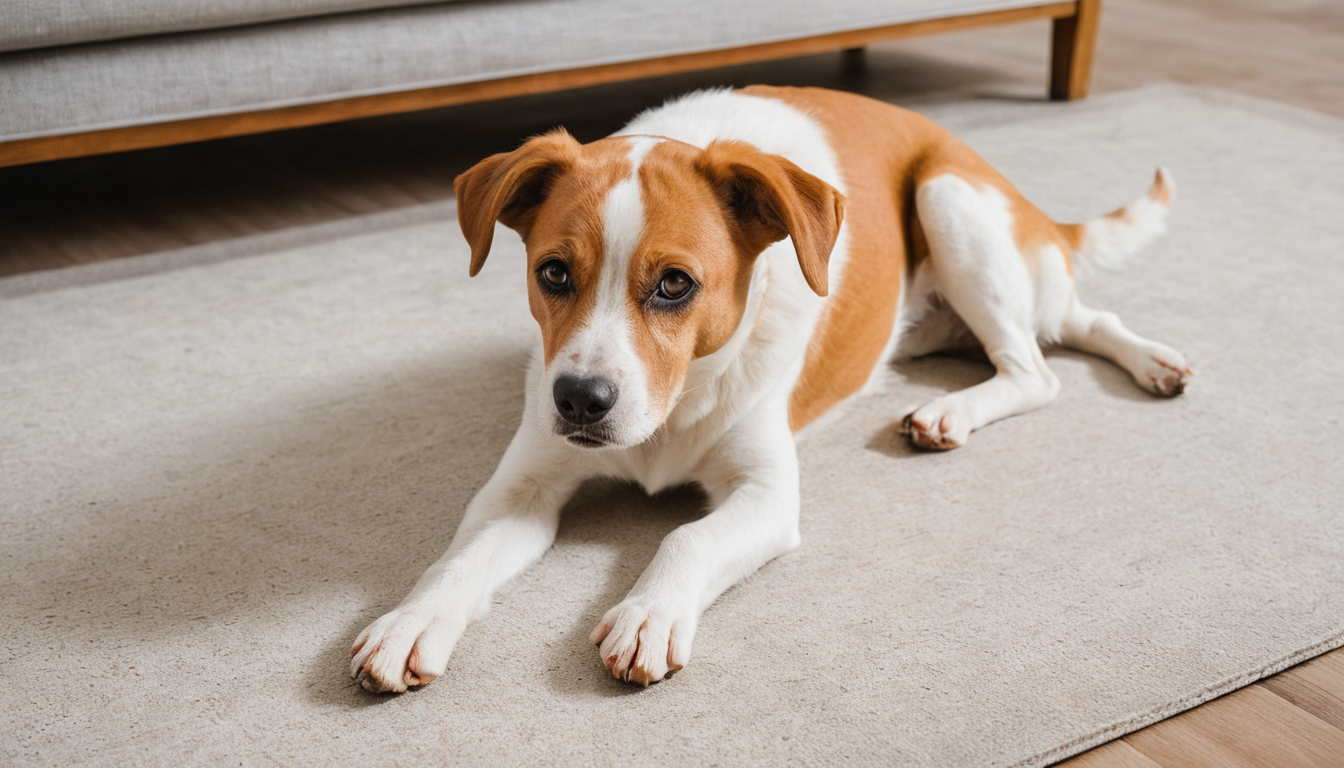
As any dog owner knows, accidents happen. Whether it’s a puppy still learning to potty train or an older dog with incontinence issues, dog urine stains can be a common problem in households with pets. Not only are dog pee stains unsightly, but they also carry strong odors that can linger long after the stain has dried. Fortunately, with the right knowledge and cleaning products, you can effectively remove dog urine stains and keep your home clean and fresh.
In this ultimate guide to dog pee stain removal, we’ll walk you through various methods for removing dog urine stains from different surfaces, along with tips for preventing future accidents. Whether you’re dealing with carpets, upholstery, or hardwood floors, we’ve got you covered.
1. Act Quickly: Why Timing Matters
The sooner you address a dog urine stain, the easier it will be to remove. Urine is acidic and can penetrate deep into fabrics or carpets, which can make the stain more difficult to remove if left for too long. For fresh pet stains, blot up as much liquid as possible with a clean towel or paper towels. Avoid rubbing the stain, as this can spread the urine and push it deeper into the fibers. If the stain is older, you may need to use a more powerful cleaning solution to break down the urine.
2. Use the Right Cleaning Solution
To effectively remove dog urine stains, you need the right cleaning solution. Regular household cleaners may not be enough to neutralize the odor or break down the stain, especially with stubborn dog pee stains. You’ll want a solution that not only cleans but also deodorizes.
DIY Solutions for Removing Dog Urine Stains:
- Vinegar and Baking Soda: One of the most popular DIY remedies involves a mixture of white vinegar and water. Mix one part white vinegar with one part water and pour the solution over the stained area. Let it sit for 5-10 minutes before blotting it up. Once dry, sprinkle baking soda over the area to help neutralize any lingering odors. The combination of vinegar and baking soda works well to lift the stain and tackle odors.
- Dish Soap and Hydrogen Peroxide: For tougher stains, you can create a powerful solution by mixing one tablespoon of dish soap with two cups of warm water and one tablespoon of hydrogen peroxide. Apply the solution to the stain and let it sit for about 10-15 minutes. Then, blot it up with a clean cloth. This mixture is especially effective for older stains.
Commercial Cleaners:
If you prefer a store-bought solution, there are many enzymatic cleaners specifically designed to remove dog urine stains. Enzymatic cleaners contain natural enzymes that break down the proteins in the urine, which is key to fully removing both the stain and the odor. Look for a cleaner that is safe for pets and suitable for your type of flooring or upholstery.
To use, spray the enzymatic cleaner generously over the stain, making sure to cover the entire affected area. Allow it to sit for the amount of time specified on the product label—usually about 10-15 minutes—and then blot up any excess liquid. Follow the instructions carefully to get the best results.
3. Target Different Surfaces
Dog urine stains can occur on various surfaces in your home, and each requires a slightly different treatment.
Carpets and Rugs:
Carpets are the most common victims of dog urine stains. Because carpet fibers are highly absorbent, it’s important to act quickly to avoid the urine soaking in deep. After blotting up as much liquid as possible, apply your cleaning solution and let it sit for the recommended time. Once the stain is removed, rinse the area with clean water and blot it dry. You may want to vacuum the area once it’s fully dry to restore the texture of the carpet.
For tough or older stains, consider using a steam cleaner with an appropriate cleaning solution designed for pet stains. Steam cleaning can penetrate deeper into the carpet fibers and help remove lingering odors.
Upholstery:
If your dog has had an accident on the couch or a chair, you can use the same vinegar-water solution or an enzymatic cleaner to treat the stain. Be sure to test any cleaning solution on an inconspicuous area of the fabric first to ensure it doesn’t cause discoloration or damage. When cleaning upholstery, use a minimal amount of liquid to avoid soaking the fabric. Gently blot the stain with a cloth, and allow the upholstery to air dry.
Hardwood Floors:
While dog urine can damage hardwood floors if left untreated, it’s easier to clean than carpets. First, wipe up as much liquid as possible using a dry cloth. Then, apply a mild vinegar-water solution (1 part vinegar to 3 parts water) to the stain. Wipe it up quickly and dry the area to prevent moisture from seeping into the wood. For more stubborn stains, consider using a specialized floor cleaner designed for pet stains.
Tile and Stone Floors:
Tile floors are relatively easy to clean, but urine can seep into the grout and leave a lingering odor. Use a mild soap-and-water solution to scrub the area, and for grout, you may need a grout cleaner or a mixture of baking soda and water to lift the stain. Be sure to dry the area thoroughly to prevent water damage.
4. Neutralize Odors
Even after you’ve successfully removed the stain, the odor may still linger. To completely neutralize odors, try sprinkling baking soda over the cleaned area and let it sit for several hours (or overnight). Baking soda is excellent at absorbing odors and can leave your home smelling fresh.
Alternatively, if you’re using an enzymatic cleaner, it should also help neutralize the odor as it breaks down the urine proteins.
5. Prevent Future Accidents
While cleaning up after dog urine stains is essential, prevention is always better. Here are a few tips to minimize future accidents:
- Regular Bathroom Breaks: If your dog is still in the potty training phase, be sure to take them out frequently. For adult dogs, regular walks and bathroom breaks are essential to prevent accidents indoors.
- Health Check: Sometimes, increased urination or accidents indoors can be a sign of a health issue. If your dog suddenly starts urinating indoors or seems to have trouble holding it, consult your vet.
- Protective Mats: Consider placing washable mats or furniture covers in areas where your dog spends the most time. These can help protect your floors and furniture from future accidents.
Conclusion
Removing dog urine stains and pet stains doesn’t have to be a difficult or stressful task. With the right cleaning solutions and techniques, you can successfully remove dog urine stains from carpets, upholstery, and hard surfaces. The key is to act quickly, use the right products, and follow the proper cleaning methods for each type of surface.
By keeping your home clean and odor-free, you’ll ensure a comfortable environment for both you and your furry companion.
Dogs
The Touching Story Behind Why a Dog Lays on a Particular Spot in the Yard

The Touching Story Behind Why a Dog Lays on a Particular Spot in the Yard: A Tale of Unbreakable Loyalty
Dogs are known for their incredible loyalty, but sometimes their devotion to those they love can manifest in heart-wrenching ways. This is the case with one dog whose habit of laying on a specific spot in the yard has left many people in tears. What may appear to be a simple, everyday action carries with it a deeper, heartbreaking reason that has moved dog lovers and pet owners alike.
In this article, we will delve into the emotional backstory of why this dog chooses that special spot and what it reveals about the profound bond between pets and their owners.
The Unbreakable Bond Between Humans and Dogs
Dogs have long been known as “man’s best friend.” Their unwavering loyalty and companionship can turn them into integral parts of our families. They sense our emotions, offer comfort in times of need, and provide joy and laughter. The bond between humans and dogs is unique, and for many, their pet becomes more than just an animal — they are family.
Why Do Dogs Form Such Strong Attachments?
One of the reasons dogs are so loyal is due to their pack mentality. In the wild, dogs live and hunt in packs, forming tight-knit social groups. When domesticated, they transfer this pack behavior to their human families. Dogs will go to great lengths to remain close to those they consider part of their pack, and when a member is lost, the dog often mourns deeply.
@talltaz The whole yard and he only lays on top of where we buried her 🥺😭 #petloss #grief #fyp
The Story of the Loyal Dog and the Special Spot in the Yard
In one particular case, a dog’s loyalty is demonstrated in an incredibly poignant way. After the passing of the dog’s owner, the pet began to exhibit unusual behavior — lying down on the same spot in the yard every single day. At first, the family thought it was just a comfortable place for the dog to rest, but they soon realized that the spot held a special significance.
The Meaning Behind the Spot
The spot where the dog lays is the same place where the owner used to spend time with the dog, sitting outside together, enjoying the fresh air and the sunshine. After the owner passed away, the dog returned to that spot daily, as if waiting for the person to return. The dog’s actions have been described as a form of mourning, a way of staying close to their beloved human even after they’ve gone.
How Pets Grieve the Loss of Their Owners
Just like humans, dogs can experience grief when they lose someone they love. The signs of grief in dogs can include changes in behavior, loss of appetite, and separation anxiety. In some cases, dogs may return to places that remind them of their owner, like the loyal dog who lays on that specific spot in the yard.
Signs of Grieving in Dogs
- Loss of Appetite: One of the most common signs of a grieving dog is a refusal to eat or a noticeable decrease in appetite.
- Withdrawal: A grieving dog may become less active or less interested in playing, choosing instead to lay in one place for long periods.
- Whining or Howling: Some dogs will vocalize their sadness through whines or howls, particularly when they are in a place that reminds them of their owner.
- Searching: It’s not uncommon for dogs to search the house or yard for their lost companion, wandering around or sniffing in places where their owner used to be.
The Science Behind Dogs and Grief
Research into canine behavior has shown that dogs are capable of feeling complex emotions, including grief. A study by the American Society for the Prevention of Cruelty to Animals (ASPCA) revealed that more than 60% of dogs exhibited signs of grief after the loss of a companion pet, and it’s reasonable to believe that they would react similarly after losing a human companion. The dog’s brain processes emotions in much the same way as the human brain, and they often form deep emotional bonds that are difficult to break.
How Dogs Cope With Loss
Dogs, much like humans, cope with loss in different ways. While some may exhibit signs of sadness or distress, others might become more clingy or protective of their remaining family members. Providing them with comfort, attention, and familiar routines can help them cope with their feelings of loss.
Helping a Grieving Dog
If your dog is showing signs of grief, it’s essential to provide them with support and understanding. They may need extra care and attention during this difficult time. Here are a few ways to help a grieving dog:
- Stick to a Routine: Keeping a regular routine can provide a sense of stability and security for your pet.
- Give Them Extra Attention: Spending more time with your dog, offering affection and comfort, can help ease their sadness.
- Offer Comforting Items: Items that smell like the deceased owner, such as clothing or bedding, may help the dog feel close to their lost companion.
A Dog’s Loyalty Knows No Bounds
The story of the dog lying on that specific spot in the yard is just one of many examples of how deeply dogs feel their connections to humans. It highlights the incredible loyalty that dogs have for their owners, even after death. Dogs don’t just offer companionship while we are alive; they continue to show their love and dedication long after we’re gone.
Other Heartwarming Stories of Canine Loyalty
This isn’t the only story of a dog displaying remarkable loyalty. There are countless stories of dogs who wait for their owners, return to places they once shared, or exhibit behaviors that suggest they are mourning the loss of their loved ones. One of the most famous examples is the story of Hachiko, the Japanese Akita who waited at a train station every day for nearly ten years after his owner’s death. Such stories remind us of the deep emotional lives of our pets and the bonds they form with us.
Conclusion
The heartbreaking story of the dog laying on a specific spot in the yard is a testament to the unbreakable bond between humans and their pets. It’s a reminder that dogs are not just pets; they are loyal, loving companions who feel loss and grief just as deeply as we do. For this particular dog, that spot in the yard is more than just a place to rest; it’s a symbol of the inseparable bond they shared with their owner.
Frequently Asked Questions (FAQs)
Why does my dog lay in a specific spot every day?
Dogs often return to places that have sentimental value, either due to memories they associate with the spot or because it reminds them of their owners. In some cases, a dog may lay in a particular spot because it feels safe or comforting.
Can dogs really feel grief after losing an owner?
Yes, dogs are capable of feeling grief. They can show signs of sadness, withdrawal, loss of appetite, and even changes in behavior when they lose a companion, whether it’s another pet or a human.
How can I help my grieving dog cope with the loss of a family member?
You can help your grieving dog by providing extra attention, maintaining a consistent routine, and offering comforting items like their owner’s clothing or bedding. It’s important to give them time to adjust and to provide emotional support.
How long does it take for a dog to overcome grief?
The grieving process can vary from dog to dog. While some dogs may recover within a few weeks, others may take months to adjust. It’s essential to be patient and offer them the love and care they need during this time.
Are there any other signs that a dog is grieving?
Aside from loss of appetite and withdrawal, a grieving dog may become more vocal, clingy, or exhibit behaviors like searching the house for their lost companion. Each dog grieves differently, so it’s crucial to observe their behavior and provide comfort when needed.
We appreciate you for taking the time to read this article!
Finally, we hope you found this article interesting? And what do you think about ”The Touching Story Behind Why a Dog Lays on a Particular Spot in the Yard!?”
Please feel free to share or inform your friends about this article and this site, thanks!
And let us know if you observe something that isn’t quite right.
References: Heartbreaking Reason Dog Lays on Specific Spot in Yard
Dogs
How Do Dogs Know Their Rescuers and Adopters?

How Do Dogs Know Their Rescuers and Adopters?
Dogs are often considered man’s best friend, and for good reason. Their loyalty, empathy, and innate ability to form deep connections with humans are truly remarkable. But one question that has intrigued pet lovers and researchers alike is: How do dogs recognize their rescuers and adopters?
This seemingly simple question opens up a world of complex emotional and cognitive processes that dogs undergo when they meet someone who will become an important part of their lives.
In this comprehensive exploration, we will delve into the science and emotion behind a dog’s ability to recognize and bond with their rescuers and adopters. From the impact of scent and body language to the neurological responses in a dog’s brain, we will uncover the many layers that contribute to this profound connection.
The Bond Between Humans and Dogs
A Relationship Rooted in History
The relationship between humans and dogs dates back thousands of years. Originally, dogs were domesticated from wolves, and through selective breeding, they evolved into the varied breeds we know today. This long history has led to a deep bond between the two species, with dogs becoming attuned to human emotions, behaviors, and cues.
Understanding the Human-Dog Connection
Dogs have evolved to become incredibly perceptive to human emotions. This connection is so strong that dogs can often sense when their owners are happy, sad, or anxious. This ability is due in part to the oxytocin hormone, often referred to as the “love hormone.” Both dogs and humans release oxytocin when they interact positively, strengthening their bond.
How Dogs Recognize Their Rescuers
The Role of Scent in Recognition
Dogs have an extraordinary sense of smell—up to 100,000 times more sensitive than that of humans. This acute olfactory ability allows them to pick up on a wide range of scents, including those associated with specific people. When a dog is rescued, the first thing they often do is sniff their rescuer. This initial interaction helps the dog form a scent-based memory of the person who saved them.
The Importance of Body Language
In addition to scent, dogs rely heavily on body language to interpret human intentions. A rescuer’s calm demeanor, gentle movements, and soft voice can reassure a frightened dog and help them form a positive association. Dogs are incredibly intuitive and can quickly pick up on the non-verbal cues that indicate whether a person is a friend or foe.
Voice Recognition and Emotional Tone
Dogs are also highly attuned to the tone of voice used by their rescuers. A soothing, calm voice can help alleviate a dog’s anxiety and build trust. Over time, dogs can learn to recognize their rescuer’s voice and associate it with safety and comfort.
Adoption: The Beginning of a New Bond
The First Meeting
The initial meeting between a dog and their adopter is a critical moment. During this time, the dog will use all of their senses—smell, sight, hearing, and touch—to assess the person. A successful first meeting often involves allowing the dog to approach the adopter on their own terms, giving them the space to feel safe and secure.
Building Trust Over Time
Trust is not built overnight. It takes time, patience, and consistency for a dog to fully trust their adopter. This process can be particularly challenging for dogs that have experienced trauma or neglect. However, with love and understanding, even the most fearful dogs can learn to trust again.
The Role of Routine in Bonding
Dogs thrive on routine. Establishing a consistent routine with regular feeding times, walks, and play sessions helps a dog feel secure in their new environment. This sense of security is crucial for building a strong bond between a dog and their adopter.
The Science Behind the Bond
Neurological Responses in Dogs
When a dog interacts with their rescuer or adopter, their brain undergoes several changes. Research has shown that positive interactions with humans can increase levels of oxytocin in a dog’s brain. This hormone is responsible for feelings of love and attachment, similar to the bond between a parent and child.
The Role of the Amygdala
The amygdala, a part of the brain involved in processing emotions, plays a crucial role in how dogs perceive their rescuers and adopters. This area of the brain helps dogs recognize familiar faces and respond to emotional cues, further strengthening the bond between dog and human.
Dopamine and Positive Reinforcement
Dopamine, another important neurotransmitter, is released in a dog’s brain during positive interactions with their owner. This “feel-good” chemical reinforces the bond by making the dog associate their owner with feelings of happiness and pleasure.
Emotional Intelligence in Dogs
Dogs’ Ability to Empathize
One of the most remarkable aspects of dogs is their ability to empathize with humans. Studies have shown that dogs can sense when their owner is upset and will often try to comfort them. This emotional intelligence is a key factor in the deep bond that forms between a dog and their rescuer or adopter.
Recognizing Human Emotions
Dogs can recognize and respond to human emotions through facial expressions, tone of voice, and body language. This ability to understand and react to human emotions is a result of thousands of years of co-evolution, making dogs incredibly in tune with their owners.
Challenges in Forming Bonds with Rescued Dogs
Overcoming Trauma
Many rescued dogs come from backgrounds of abuse, neglect, or abandonment. These traumatic experiences can make it difficult for them to trust humans. Patience, understanding, and professional training are often required to help these dogs overcome their past and form new bonds with their adopters.
The Role of Positive Reinforcement
Positive reinforcement is a powerful tool in helping rescued dogs build trust with their adopters. Rewarding good behavior with treats, praise, and affection can help a dog associate their adopter with positive experiences, making it easier for them to bond.
The Importance of Socialization
Socialization is key to helping rescued dogs feel comfortable in their new environment. Introducing them to new people, places, and other animals in a controlled and positive manner can help reduce anxiety and build confidence.
The Power of Love and Patience
Stories of Successful Bonds
Countless stories exist of dogs who, despite their difficult pasts, have gone on to form deep and lasting bonds with their adopters. These stories are a testament to the power of love, patience, and understanding in helping dogs heal and trust again.
The Impact of a Forever Home
For many rescued dogs, finding a forever home is a life-changing experience. The security, love, and care they receive from their adopters can help them overcome their past and live a happy, fulfilling life.
How Do Dogs Know They’ve Found Their Forever Family?
The Subtle Signs of Recognition
Dogs have a unique way of showing that they recognize and trust their adopters. Some of these signs include following their owner around the house, seeking out physical affection, and displaying relaxed body language. These subtle behaviors are a clear indication that a dog has formed a strong bond with their adopter.
The Role of Consistency and Care
Consistency in care is crucial in helping a dog feel secure in their new home. Regular feeding times, walks, and play sessions help establish a routine that dogs can rely on, making them feel safe and loved.
Understanding Your Dog’s Language
Dogs communicate their feelings in various ways, including through their body language, vocalizations, and behavior. Understanding these signals is key to building a strong, trusting relationship with your dog.
Conclusion: The Deep Connection Between Dogs and Their Rescuers
The bond between a dog and their rescuer or adopter is one of the most profound relationships in the animal kingdom. It is built on trust, love, and understanding, and is reinforced by the many ways dogs communicate and connect with their human companions.
Whether through scent, body language, or the release of oxytocin and dopamine, dogs have a unique ability to recognize and bond with the people who save them. This connection is not only a testament to the emotional intelligence of dogs but also to the deep-rooted history and co-evolution of the human-dog relationship.
Frequentions Asked Questions (FAQs)
Can dogs remember their rescuers even after many years?
Yes, dogs have excellent long-term memories, especially when it comes to people who have made a significant impact on their lives, such as rescuers. A dog’s strong sense of smell and emotional memory allow them to remember their rescuers even after a long time.
How can adopters help a dog adjust to their new home?
Adopters can help their dog adjust by establishing a consistent routine, providing plenty of positive reinforcement, and allowing the dog to explore their new environment at their own pace. Patience and understanding are key to helping a dog feel secure in their new home.
Do dogs feel gratitude towards their rescuers?
While dogs may not feel gratitude in the same way humans do, they do form strong emotional bonds with their rescuers. These bonds are often based on trust, safety, and the positive experiences shared with their rescuer.
How do dogs recognize their rescuers or adopters?
Dogs have an incredible sense of smell and memory, which helps them recognize their rescuers or adopters. They can remember the unique scent of a person, even if they haven’t seen them for a long time. Additionally, dogs are highly perceptive to body language and voice tone, which allows them to form a bond and recognize their humans through these cues.
How long does it take for a dog to bond with a new adopter?
The time it takes for a dog to bond with a new adopter can vary depending on the dog’s personality, past experiences, and the environment. Some dogs may form a bond within days, while others may take weeks or even months to fully trust and connect with their new owner. Patience, consistency, and positive reinforcement are key to building a strong bond.
Can a dog remember its rescuer after being adopted by someone else?
Yes, dogs can remember their rescuers even after being adopted by someone else. Their powerful memory, especially when it comes to emotional experiences, allows them to retain the scent, voice, and actions of those who have helped them. If a dog meets its rescuer again, it may show signs of recognition and affection.
What role does scent play in a dog recognizing its rescuer or adopter?
Scent plays a crucial role in how dogs recognize people. A dog’s sense of smell is thousands of times more sensitive than that of humans, allowing them to pick up on subtle scent cues that we can’t detect. When a dog is rescued or adopted, it memorizes the unique scent of its new human, which helps it identify and remember them later.
How can adopters help a rescue dog feel secure and loved?
To help a rescue dog feel secure and loved, adopters should provide a stable environment, consistent routines, and plenty of positive reinforcement. Spending quality time with the dog, offering treats, and giving gentle attention can help the dog feel safe. It’s also important to be patient and understanding, as rescue dogs may need time to adjust to their new surroundings and form a bond with their adopter.
We appreciate you for taking the time to read this article!
Finally, we hope you found this article interesting? And what do you think about ”How Do Dogs Know Their Rescuers and Adopters?!?”
Please feel free to share or inform your friends about this article and this site, thanks!
And let us know if you observe something that isn’t quite right.
-
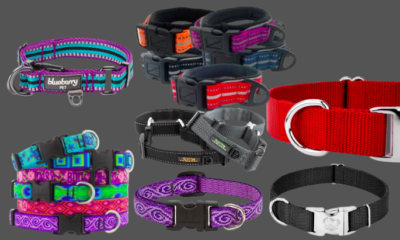
 Pet Care2 years ago
Pet Care2 years agoThe Best Dog Collars For 2022
-
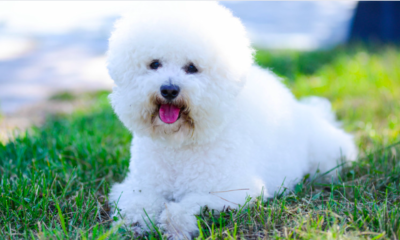
 Dogs2 years ago
Dogs2 years agoBichon Frise: The Happy, Playful, and Cuddly Companion
-
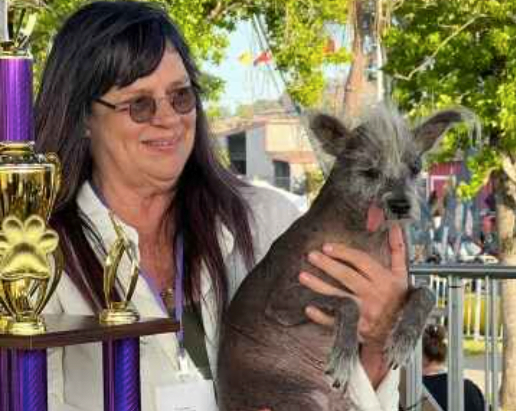
 Trending Pet Stories1 year ago
Trending Pet Stories1 year ago2023 ‘World’s Ugliest Dog’ Winner: Scooter’s Tale of Resilience
-
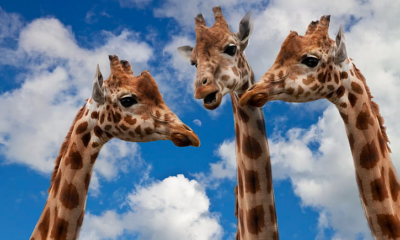
 Animals3 years ago
Animals3 years agoAre There Animals Having Down Syndrome?
-
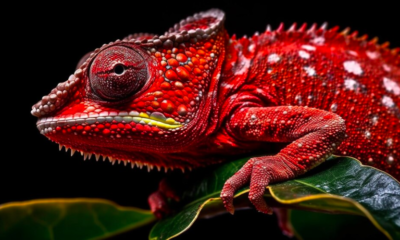
 Pets2 years ago
Pets2 years agoThe Fascinating World Of The Red Chameleon
-
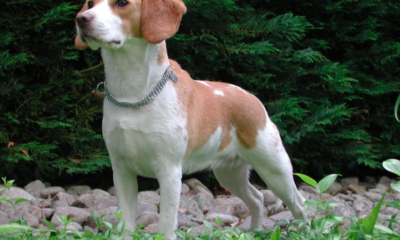
 Dogs3 years ago
Dogs3 years agoTop 10 Most Popular Dog Breeds According To AKC.
-
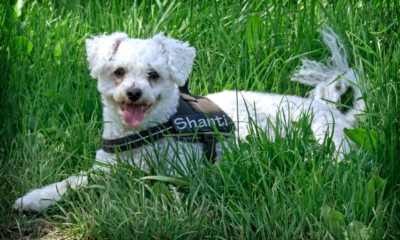
 Dogs3 years ago
Dogs3 years ago21 Dog Breeds That Resemble Bears Or Teddy Bears!
-
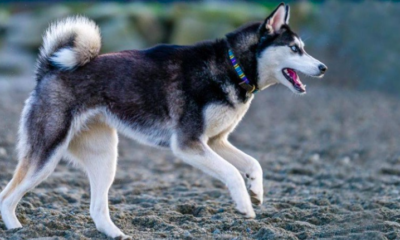
 Dogs3 years ago
Dogs3 years agoEskimo Dogs from Canada – What Are They? – Find Out!
